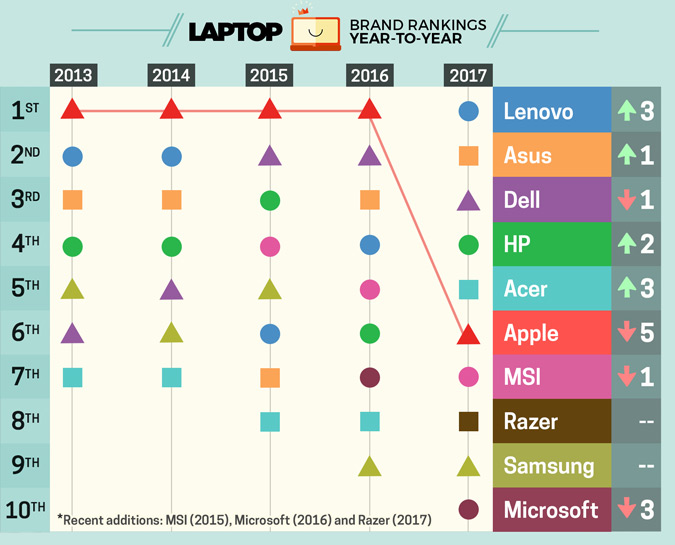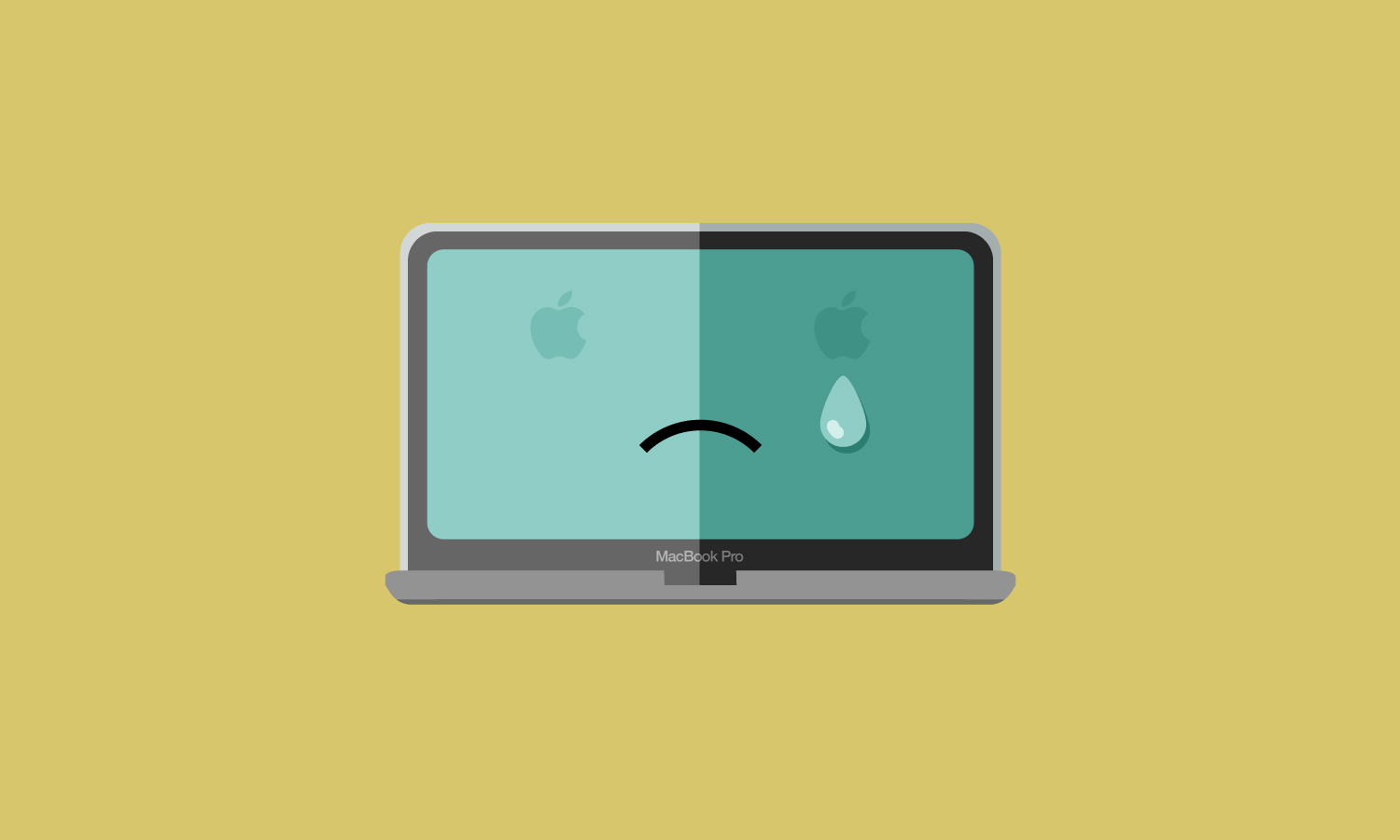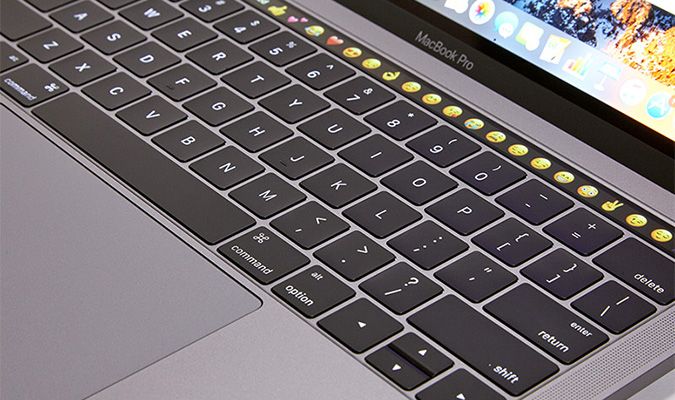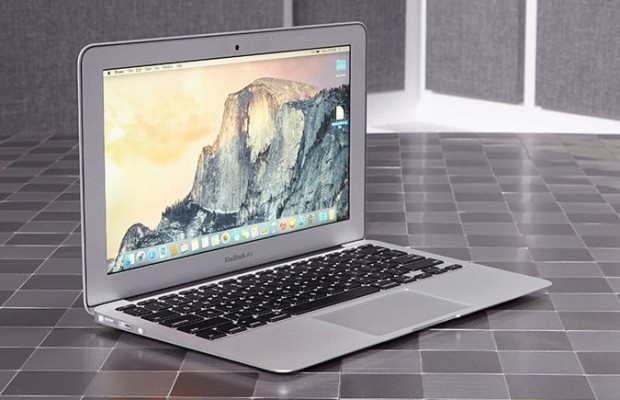What the Hell Happened to Apple Laptops?
The shine is officially off of Apple. After taking the top spot in our annual Best and Worst Laptop Brands report since 2010, Apple has fallen out of first place for the first time. But not to second place. Or even third. The MacBook maker plummeted all the way to fifth out of 10 companies.

What the hell happened?
Each year, we evaluate the top laptop brands in several categories, including design, reviews, tech support, warranty, and value and selection. This year, Apple impressed with its tech support, taking first in our undercover Tech Support Showdown.
But it goes downhill from there, as Apple has disappointed creative professionals with its latest wares while also abandoning mainstream shoppers on budgets.

Apple left too much on the cutting room floor for its Pro machines.
For starters, the latest 13-inch MacBook Pro with Touch Bar didn't impress us that much in our review. The Touch Bar itself is fairly innovative, but it feels like a tease when you can reach out and touch the entire screen on more versatile, Windows-powered convertibles like the HP Spectre x360 and XPS 13 2-in-1.

Opting for the Touch Bar model also means sacrificing battery life, as the non-Touch Bar MacBook Pro has a bigger battery and lasts longer on a charge.
Then there's the matter of ports, or lack thereof. In an effort to create the most streamlined designs possible, Apple ditched both traditional USB ports and SD Card slots in favor of Thunderbolt 3. As a result, MacBook Pro owners need to carry around awkward dongles to connect their phones, cameras and other peripherals.
Sign up to receive The Snapshot, a free special dispatch from Laptop Mag, in your inbox.
I can see sacrificing these ports on the razor-thin 12-inch MacBook, but Apple left too much on the cutting room floor for its Pro machines.

Apple also dropped the ball in the value department. The company got rid of the 11-inch Air (pictured above), which was Apple's most affordable laptop, at $899, leaving the ancient $999 13-inch MacBook Air as the most affordable system in the MacBook lineup. However, the 13-inch Air feels like leftovers that have been left out on the counter for over two years, complete with a 5th Generation Intel Core chip. (We're now on 7th Gen, people.)
You could argue that the 12-inch MacBook Air is a viable alternative, but it's too expensive for the masses, at $1,299, and not quite big enough to be your primary computer unless you're a frequent flier. Plus, while I don't mind the flat keyboard, it doesn't provide as much tactile feedback as competing Windows systems like the HP Spectre do. The MacBook Air is also underpowered, with its Core m3 or m5 chip.
It's not nearly as svelte as Apple's ultraportable, but the Asus Zenbook UX330UA delivers 10 hours of battery life, a full-power 7th Generation Core CPU and 10 hours of battery life, all for just $699. Now you can see why Apple got a 6 out of 15 in value and selection.
And please don't get me started about the iPad Pro ($847 with Apple Pencil and Smart Keyboard) being portrayed as Apple's most affordable computer. There's no touchpad on this machine's optional keyboard, and iOS simply isn't as good as macOS for multitasking.
During a recent sit-down with reporters, Apple executives readily admitted that the company wasn't doing a good enough job of catering to creative professionals with its desktop line, promising a full revamp for 2018.
Based on the results of our survey, Apple should also look to make serious improvements to its MacBook line. This is needed not just for pros but everyday consumers who want to take full advantage of the security, ease of use and iOS synergies that macOS brings to the table. Apple, consider this your wake-up call.
Image credits: Tom's Guide; Nick Bush/Tom's Guide; Jeremy Lips/Tom's Guide

